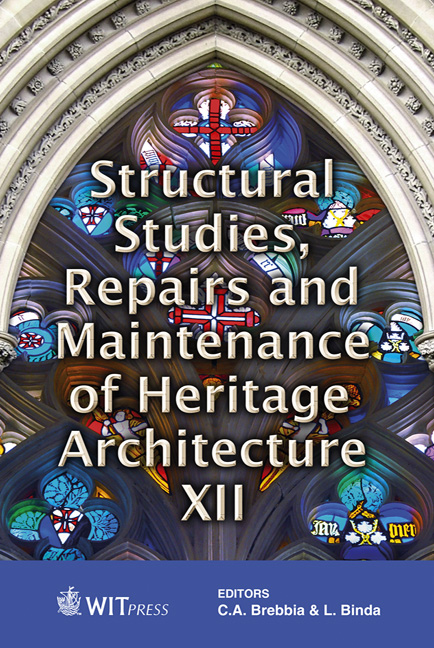Pierre-simili And Cimorné Cladding: From Modern Craftsmanship To Contemporary Renovation Techniques
Price
Free (open access)
Transaction
Volume
118
Pages
12
Page Range
601 - 612
Published
2011
Size
1,355 kb
Paper DOI
10.2495/STR110501
Copyright
WIT Press
Author(s)
L. Dekeyser, A. Verdonck & H. De Clercq
Abstract
This paper introduces and valorises pierre-simili and cimorné cladding by confronting knowledge resulting from literature, patents and lab analysis. This leads to original formulas and application methods, which will be further investigated towards scientific renovation and restoration strategies. Early 20th century architecture is characterized by the development of innovative finishes like pierre-simili and cimorné cladding. Pierre-simili finish or ‘stone imitation’ is used in order to imitate sandstone masonry façades. The illusion of stone is obtained by adding lime, mica and crunched stone to a light grey or white cement (bad mortar) and by scraping the surface to create a rough texture. Consequently false joints are drawn into the wet mortar. Cimorné (ciment orné) means ‘decorated cement’. Opal glass fragments are projected into wet mortar. This technique allows applying a bright coloured mortar that does not fade. Currently, there is no scientific based strategy to solve present damage such as contamination, cracks and peeling off. The combination of a literature study, a study of records, patents and onsite research followed by laboratory analysis of onsite lifted samples leads to formulas and application methods that will contribute to future renovation/restoration projects. Keywords: decorative cladding, finish, stone imitation, restoration/renovation strategy, material-technical research, early 20th century heritage.
Keywords
decorative cladding, finish, stone imitation, restoration/renovation strategy, material-technical research, early 20th century heritage




